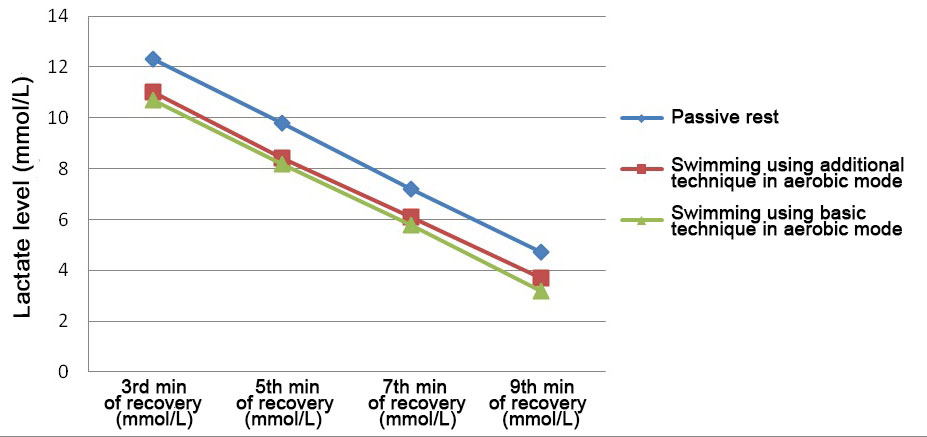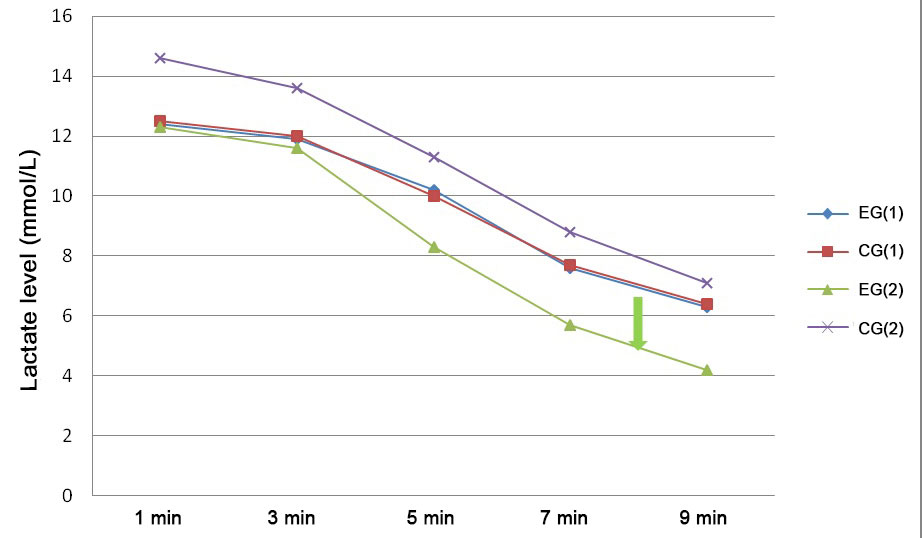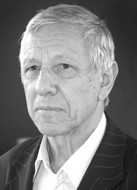Anaerobic practices to build up oxidizing capacity in core muscle groups
Фотографии:
ˑ:
Dr.Hab., Professor G.A. Gilev1
V.N. Gladkov2
Postgraduate student V.V. Vladykina1
Associate Professor А.А. Pleshakov3
1Moscow Pedagogical State University, Moscow
2Centre of Innovative Sports Technology and Sports Training of National teams, Moscow Sport and Tourism Department
3Moscow Polytechnic University, Moscow
Keywords: swimmers, anaerobic and aerobic loads, athletic performance, oxidizing capacity, energy supply for muscle contraction.
Introduction. The problem of selection of training means and methods is quite relevant for further growth of sports results [6, 2, et al.]. In this view, improvement of energy supply during physical loads in the anaerobic glycolytic zone is one of the main tasks of training in cyclic sports, in particular, in maximal-speed 100-400m swimming. Enhancement of the oxidizing capacity of the working muscle groups at these distances is among the key objectives of improvement of competitive performance [3, et al]. Some authors believe that it is positive changes in the energy exchange level that determine the increase in athletic performance in different sports [1, et al].
It is known that the metabolic process of the anaerobic glycolytic ATP resynthesis is a multilevel enzymatic breakdown of carbohydrates leading to the lactate (lactic acid) formation in the working muscles, which then goes to the blood. Under the influence of the accumulated lactate, the blood pH becomes acidic, which, in turn, results in the decreased intensity of glycolytic processes [7, et al.].
Another limiting factor for athletic performance is the intensity of post-exercise recovery [4, 5, etc.].
From these perspectives, improvement of competitive performance associated with glycolytic energy supply to muscles depends on the higher rate of lactate utilization in the muscles during the exercise, which prevents an increase in the blood lactic acid, as well as an increase in the intensity of restoration of lactate concentration at the end of the distance.
Objective of the study was to substantiate the possibility of improving elite swimmers’ athletic performance and lactate utilization after glycolytic load when combining loads of different intensity.
Methods and structure of the study. Applied for the study purposes were the physiological and biochemical test methods (including HR and blood lactate tests), chronometry and standard mathematical statistics methods.
28 elite 50/100/200/400m swimmers evenly split up into Experimental (EG) and Reference (RG) groups were subject to the 4.5-month-long (1 microcycle) educational experiment. The athletes’ anaerobic threshold (AnT) was determined using a step load test by the dynamics of blood lactate concentration during 60s rest breaks. Prior to the experiment and after it the subjects were to cover their "own" competitive distances.
The athletic training protocol involved swimming "individual" distance 4 times at maximum possible speed. The duration of rest breaks between the distances was reduced from 9 minutes to 15 seconds depending on the distance and stage of the experiment. The training sessions according to this program were held at least twice a week.
The difference was that, during the rest breaks between the distances, the RG swimmers swam using the additional technique in the aerobic zone or relaxed passively. The training process of the EG swimmers differed from that of the RG ones by the rest regime in between intensive intervals. Having swum the intensive distance section, the EG athletes kept swimming using the same technique in the aerobic zone. The intensity of work of the EG athletes in between the intensive sections increased with the increase of their fitness level throughout the study, approaching the AnT level.
Results and discussion. It was observed that the recovery mode in between intensive intervals affects the blood lactate restoration rate. Table 1 shows the results of lactate restoration at various rest periods after the 200m race at maximum speed.
A similar picture was observed at all distances. As seen, the common idea among the athletes that workload should be followed by passive rest is erroneous!
The lactate restoration dynamics at the end of the competitive distance is most clearly illustrated in Fig. 1.
Table 1. Blood lactate level after the 200m race using the basic swimming technique in different recovery modes (M±Ϭ at the confidence level of 0.9)
|
Recovery mode |
3rd min of recovery, mmol/L |
5th min of recovery, mmol/L |
7th min of recovery, mmol/L |
9th min of recovery, mmol/L |
|
Passive rest |
12.3±1.21 |
9.8±1.49 |
7.2±1.12 |
4.7±1.23 |
|
Swimming using the additional technique in the aerobic mode |
11.0+1.24 |
8.4+1.13 |
6.1+1.14 |
3.7+1.21 |
|
Swimming using the basic technique in the aerobic mode |
10.7+1.25 |
8.2+1.18 |
5.8+1.16 |
3.2+1.18 |

Fig. 1. Blood lactate level after the 200m race using the basic swimming technique in different recovery modes (passive rest, swimming using the additional technique in the aerobic mode, swimming using the basic technique in the aerobic mode)
By the end of the educational experiment, along with a significant enhancement of their lactate utilization after the glycolytic load, the EG athletes were found to have a significantly greater increase in the competitive distance swimming speed as opposed to the RG swimmers. As for heart rate (HR), it should be emphasized that the it had a positive tendency to reduction under the training loads during the educational experiment both in the EG and RG athletes. However, the group differences in the heart rate were insignificant. Table 2 presents the data on the speed of swimming the 200m distance, blood lactate level 3 minutes after the race and HR 15 seconds after the finish.
Table 2. Special working capacity indices in the Experimental and Reference Group subjects in the 200m race at maximum speed at the beginning and at the end of the educational experiment (M±Ϭ at the confidence level of 0.9)
|
Study group |
At the beginning of the experiment |
At the end of the experiment |
||||
|
Speed, m/s |
Lactate, mmol/L |
HR, bpm |
Speed, m/s |
Lactate, mmol/L |
HR, bpm |
|
|
EG |
1.544±0.016 |
10.64±0.32 |
192 ±7.1 |
1.609±0.018 |
10.81±0.34 |
189± 6.5 |
|
RG |
1.546±0.012 |
10.57±0.37 |
194 ±8.3 |
1.572±0.013 |
12.62±0.41 |
191 ±7.6 |
When considering the recovery period after the "4x50m" race at maximum speed and a 15s interval, we detected considerable differences between the EG and RG athletes. As seen from Figure 2, the lactate level after the swimming race was significantly lower in the EG swimmers than in the RG ones. At the same time, the EG athletes were found to have blood lactate restored more intensively starting from the 3rd minute of rest.

Fig. 2. Lactate level in the peripheral blood after the maximal-speed "4x50 s" test, where EG(1) and RG(1) are the Experimental and Reference Group subjects at the beginning, and EG(2), RG(2) - at the end of the educational experiment.
The EG swimmers’ athletic performance improvement at the end of the educational experiment, coupled with an insignificant change in the blood lactate concentration, indirectly indicates the inclusion in the process of specialized training of additional mechanisms of lactate utilization directly during the work, i.e. an increase in the oxidizing capacity of the working muscle groups.
The results obtained during the educational experimental prove the need not only to concentrate on the loading elements of development of motor qualities of cyclic athletes tested with the glycolytic mode of energy supply for muscle contraction, but also create conditions for improving energy metabolism in the working muscles in between intensive exercises.
Conclusion. We have substantiated the benefits of the combined glycolytic/ aerobic training model with the growing intensity in the aerobic zone close to the anaerobic threshold, while maintaining the work of the same muscles and muscle groups responsible for motor coordination in the main exercise.
References
- Gabrys T. Anaerobnaya rabotosposobnost sportsmenov: limitiruyuschie faktory, testy i kriterii, sredstva i metody trenirovki. Avtoref. dis. dokt. ped. nauk [Anaerobic performance of athletes: limiting factors, tests and criteria, training means and methods. Doctoral diss. abstract (Hab.)]. Moscow, 2000, 57 p.
- Gilev G.A., Maksimov N.E. Ispolzovanie sochetaniy uprazhneniy razlichnoy intensivnosti v trenirovochnom protsesse plovtsov [Different-intensity exercise sets in swimmers’ training process]. Vestnik sportivnoy nauki, 2011, no. 2, pp. 12-15.
- Gilev G.A., Babinina T.A., Udilova I.V. Povyshenie utilizatsii laktata pri vypolnenii uprazhneniy glikoliticheskoy napravlennosti [Increase of lactate utilization during glycolytic exercises]. Mir nauki i innovatsiy, no. 2 (2), vol. 12, Ivanovo: Nauchny mir publ., 2015, pp. 60-63.
- Gladkov V.N. Nekotorye osobennosti zabolevaniy, travm, perenapryazheniy i ikh profilaktika v sporte vysshikh dostizheniy [Some features of diseases, injuries, overstrain and their prevention in elite sports]. Moscow: Sovetskiy sport publ., 2007, 152 p.
- Markov G.V., Gladkov V.N. Kompleksnaya sistema vosstanovleniya sportsmenov v razlichnykh vidakh sporta [Integrated rehabilitation system for athletes in various sports]. Moscow: MCDPCS publ., 2005, 39 p.
- Platonov V.N. Plavanie. Uchebnik [Swimming. Textbook]. Kiev: Olimpiyskaya literatura publ., 2000, 496 p.
- Shirkovets E.A. Sistema operativnogo upravleniya i korrektiruyuschee vozdeystvie pri trenirovke v tsiklicheskikh vidakh sporta. Avtoref. dis. dokt. ped. nauk [System of operational control and corrective actions in training in cyclic sports. Doctoral diss. abstract (Hab.)]. Moscow, 1995, 49 p.
Corresponding author: ga.gilev@mpgu.edu
Abstract
The study analyzes benefits of an efficient training workload management model for elite cyclic sports on the whole and swimming sport in particular. Applied for the study purposes were the physiology and biochemistry test methods (including HR and blood lactate tests), chronometry and standard mathematical statistics methods. Subject to the 4.5-month-long educational experiment were 28 elite 50/100/200/400m swimmers evenly split up into Experimental (EG) and Reference (RG) groups. The study demonstrates benefits of the combined anaerobic/ aerobic training model with the growing intensity in the aerobic zone close to the anaerobic threshold. The performance growth on the distances claiming mostly the glycolythic energy supply with the insignificant blood lactate variations in the EG were interpreted as indicative of the extra lactate consumption mechanisms being switched on to build up the oxidizing capacity in the core muscle groups.



